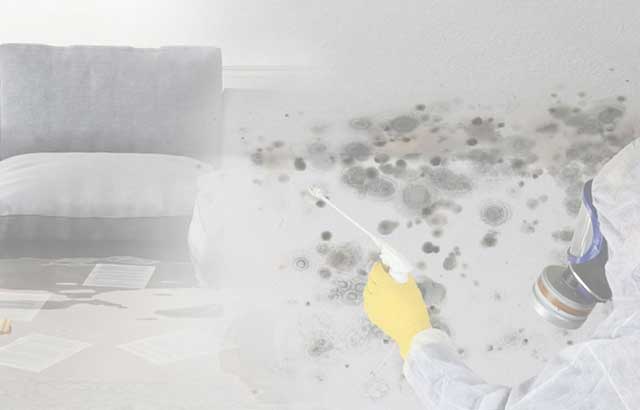Ways to Fix a Water-Damaged Wall in the Bathroom
Ways to Fix a Water-Damaged Wall in the Bathroom
Blog Article
We have stumbled on this post pertaining to Preventing Water Damage in the Bathroom listed below on the web and believe it made sense to relate it with you in this article.

The restroom is incredibly at risk for moist build-up and also potential water damage because of the constant use of water in it. This short article uses simple evaluation methods to aid detecting water damage risks.
The regular use water in the bathroom makes it incredibly prone for wet buildup and potential water damage. By checking it on a regular basis, you can lower water related problems.
The following set of evaluations is simple to do and also need to be done once in every three months in order to keep your restroom in good shape as well as to avoid prospective water problems brought on by the bath tub, the shower, pipeline joints and also plumbing, sinks, cupboards, as well as the commode
Do not forget executing these examinations and also be thorough while performing them. Keep in mind that these simple inspections can conserve you a lot of money by supplying very early signs for water damages
Sinks as well as Cabinets
Sinks as well as cupboards are subjected to wetness as well as humidity everyday and are frequently overlooked. Inspect regularly under the sink and on the countertop over it. Fix any type of drip in the catch as it may suggest drain troubles. Check out the sink, slow-moving draining pipelines may suggest a blocked drainpipe. Change sink seals if they are split or loose.
Tub and Shower
The shower and also bath tub need special attention and also upkeep. Inspect the tiles and also change if split. Ensure that there is no missing cement in between the ceramic tiles. Inspect and also change broken caulking at joints where the walls fulfill the flooring or the bathtub. Obstructed drains pipes as well as pipes troubles will avoid the bath tub from drying out and might suggest major problems under the tub. Consult with a specialist right away to prevent architectural damage. Pay attention to stainings or soft areas around the bath tub walls as they may suggest an internal leakage.
Plumbing
Signs for water damage are tough to find because a lot of pipes are mounted inside the walls.
Pay unique interest to floor covering as well as walls wetness and discolorations as they may indicate an unseen plumbing issue. Examine wetness degrees in adjoining spaces as well.
The Bathroom
The toilet is a vulnerable water joint. Inspect the water lines and look for leaks around the commode seat, in the hose pipe, and also under the water storage tank. If you detect any kind of signs of dampness on the floor around the commode, check for leakages in the toilet rim and also storage tank seals.
Be aware that hanging bathroom bowl antiperspirants increases the opportunities for clogs.
TIPS TO PREVENT WATER DAMAGE IN THE BATHROOM
The average household uses approximately 80-100 gallons of water per person per day. For a family of 4, that's almost 2,500 gallons of water a week! The largest portion of this consumption comes from bathroom use. Flushing the toilet uses the most water, followed by taking a shower or bath. With that much water running through the home, water damage in the bathroom is bound to happen. Knowing how to spot signs of a water leak is essential to preventing long-term damage. This guide provides you with tips to reduce the impact of water damage on your bathroom.
CAUSES OF BATHROOM WATER DAMAGE
Pipe breaks are the most common cause of water damage we see in our daily jobs. The age of a pipe plays a large role in a pipe break as well as corrosion. Over time, the metal begins to break down, allowing water to escape. Frozen pipe breaks are also a concern in the winter months. Toilet overflows caused by paper products or children flushing inappropriate items. Degraded caulking around the toilet or bathtub can allow water seepage, sometimes behind the fixture, into the subfloor or walls. Condensation forms when the water in a pipe is cooler than the air temperature. Beads of water form on the exterior of the pipes, sometimes so much so that the water begins to drip and pool below. Sink or shower backups created by poor drainage. HOW TO PREVENT WATER DAMAGE IN YOUR BATHROOM
Inspect your toilet supply line for worn or frayed hoses and replace them as needed. Winterize your plumbing to prevent a frozen pipe break. Use vent fans to prevent condensation that can lead to mold growth. Routinely check and replace degraded caulking around your toilet or bathtub. Increase the temperature in your toilet tank and insulate your pipes during the warm summer months to keep condensation from forming. Use child safety locks on the toilets. Flush only toilet paper. "Flushable" wet wipes are actually not good for your plumbing system. Additionally, feminine hygiene products should not be flushed. Prevent water from escaping the tub or shower. Make sure shower curtains are in good condition. Inspect shower doors and replace the seal strip if necessary. Wipe up any water that accumulates on the floor and use bath mats. Water left to sit can cause damage to the tiles and flooring. Refrain from using bath products containing heavy oils to avoid a clogged drain.

We had been introduced to that editorial about Preventing Water Damage in the Bathroom through an acquaintance on our other domain. If you please take the time to distribute this entry if you enjoyed it. Thanks for taking the time to read it.
Schedule Appointment Report this page